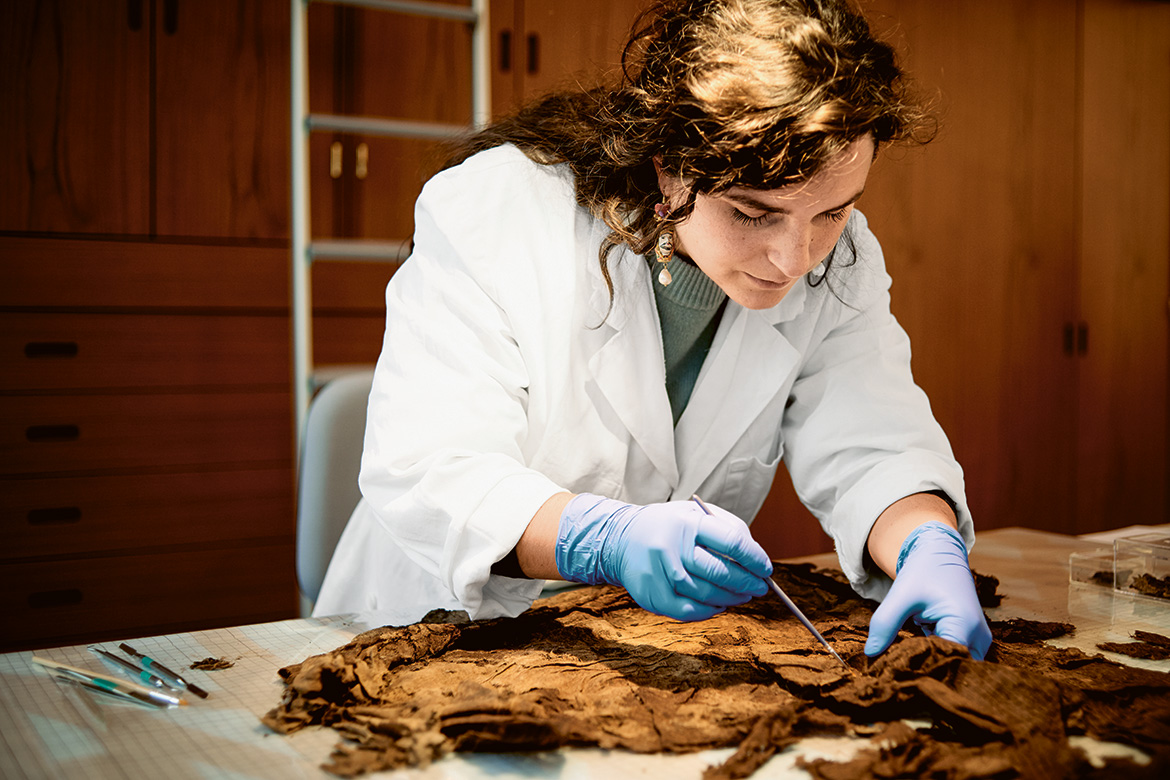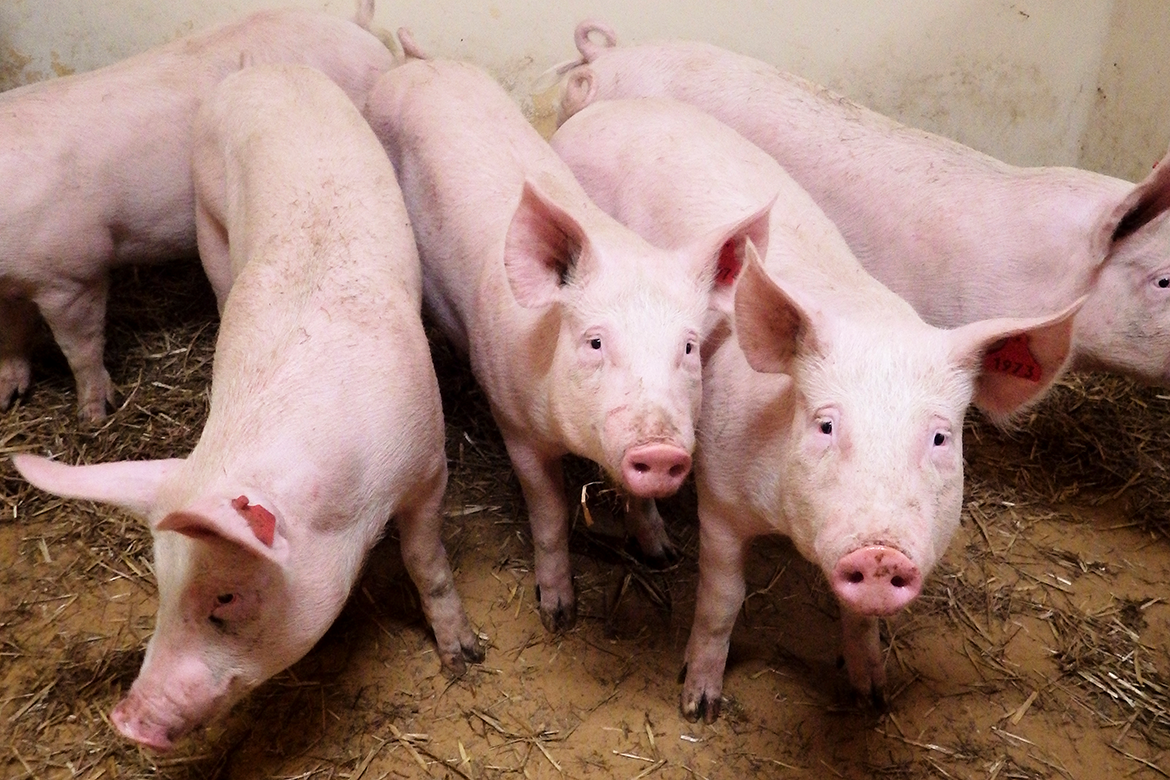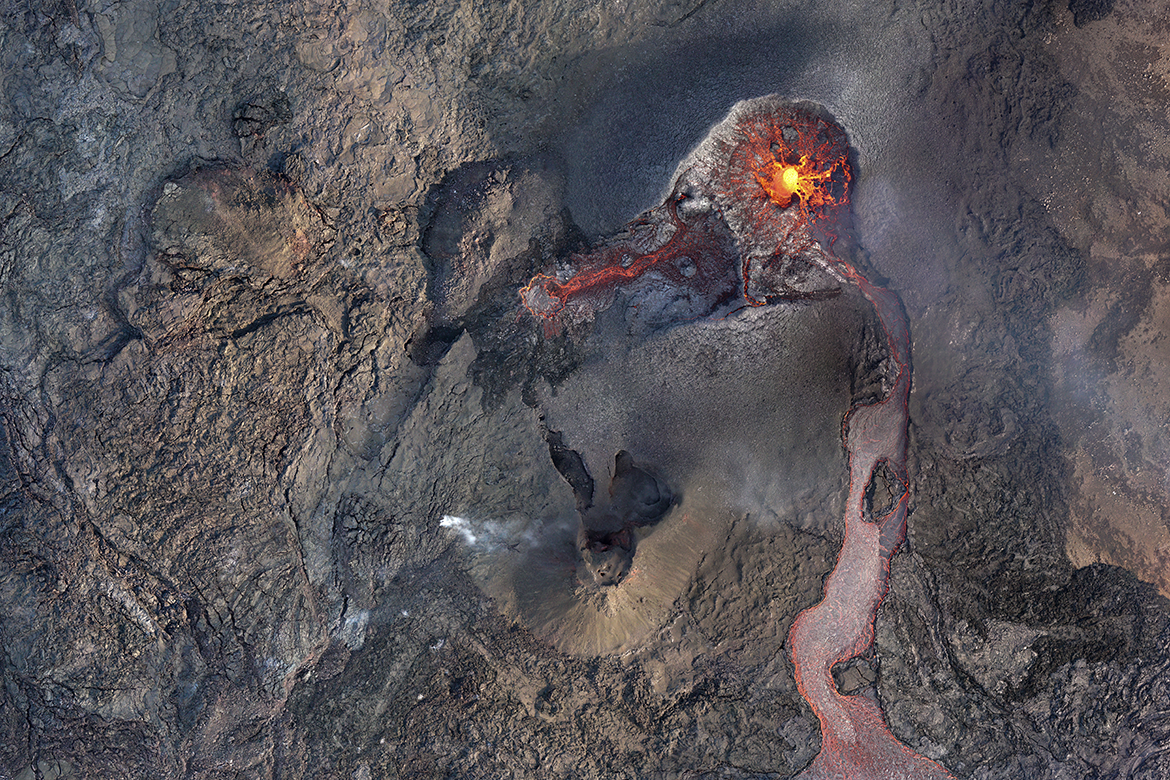Intelligent textiles
Clothes make the person
Whether it’s for firefighters struggling through smoke or for skiers out on a tour of a sun-drenched summit: researchers and start-ups are pimping out special clothing with smart systems and innovative materials to suit all manner of activities. We take a look at some very special fabrics.
Cosy and warm, down to your fingertips
We often heat whole rooms to keep ourselves warm. “And yet it would be far more efficient to heat just the area near us, or to heat ourselves directly”, says Murielle Schreck. She’s a materials scientist and the co-founder of the start-up qCella, together with Fabian Schmid and Weyde Lin.
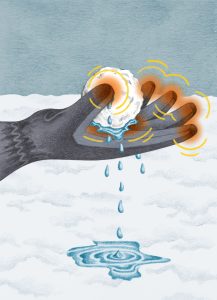
While she was completing her doctorate at ETH Zurich, she developed a thin paper mat impregnated with copper fibres that can be heated using electricity. When incorporated in shoes or gloves, it warms your feet and hands. Natural cellulose fibres made from wood, hemp or cotton are all hollow on the inside. So qCella first impregnates these fibres with copper using a wet chemical process. The copper ions migrate into the fibres and grow into particles in their cellulose network. “You can think of it like a little cellulose tube filled with copper particles”, says Schreck. “Paper made from these filled fibres heats up when electricity runs through it”.
This paper is less than a millimetre thin and is laminated to protect it from moisture. The paper heating mat is very flexible and can be cut exactly to the required size. In gloves, for example, it’s used to line the palm and fingertips; in ski boots it’s used in the soles, the area around the toes and at the ankle. When compared to conventional systems with thin heating wires, says Schreck, their invention saves energy.
A history of gait
Over the course of their lifetime, a healthy adult will walk an average of 200 million steps. And at every stage of our lives, we change how we walk. Ten years ago, researchers from the Lausanne-based Physilog Census platform began recording people’s gait in order to identify digital biomarkers. They use standardised tests to collect information by means of intelligent, 3D inertial sensors. For example, they record how quickly we stand up from a chair, the angle at which we put down our feet, the duration of our contact with the ground when walking, and how long it takes us to change direction. Young people walk differently from old people, sick people from healthy.
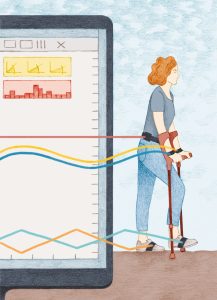
The sensor can be worn on the wrist, belt or directly on a shoe and records changes in movement in high resolution. If it’s allowed to take measurements over a longer period of time, it can record shifts in the pattern of our gait, even including tiny details that would not be registered by the naked eye. “We can record these values systematically and use them when people are in care or rehab”, says Marisa Mackenzie, who is responsible for the platform’s care sector. She emphasises the importance of these long-term measurements, both for health insurance companies that need to assess the success of a rehabilitation programme, and for the people who are actually affected. “If I can get objective data on how rehab has a positive effect on my biomarkers, then it’s an incentive for me to keep training, even when it’s strenuous”, says Mackenzie. Their system can also be used preventively. “In the USA, retirement homes and rehab centres are using it to better predict the risk of falls, for example”.
Charging your smartwatch with your jacket
It once struck Luciano Boesel how much easier it would be if you could generate the energy for your smartwatch or mobile phone yourself, instead of always having to carry a charging cable or a power bank with you.
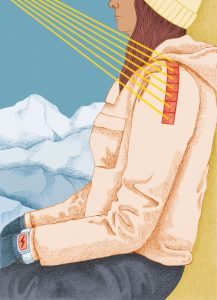
He’s a materials scientist at Empa, the Swiss Federal Laboratories for Materials Science and Technology. He started looking for suitable materials: something flexible, breathable, washable and therefore able to be integrated into clothing. The solution, he found, lies in so-called luminescent solar concentrators – LSCs for short – whose dyes collect the light of the Sun and convert it into a specific wavelength. The idea for them came originally from the building sector. Boesel adapted it, used a nanostructured polymer as a basic structure that can absorb and release moisture, and coated it with different dyes, organic molecules and nanoparticles. This turns the plastic into a light trap. “In principle, we can control the wavelength with the dye”, he says. They can cover the entire spectrum from red to yellow, green to blue, adjusting each so that the solar cell gets optimum yield.
These LSCs can be coupled with different types of solar cells. “For T-shirts, we’d only need strips a millimetre wide”, says Boesel. But the perovskite solar cell he’s been using isn’t yet available on such a small scale. So they’re conducting tests with a Swiss textile company to incorporate the LSC solar-cell system into outdoor jackets. A field some 10 square centimetres in size that’s applied to the back or shoulder areas will deliver roughly eight milliwatts, which for the moment is sufficient to power a smartwatch.
A guardian angel in a vest
Devastating forest fires, landslides, floods: Natural disasters are on the rise all over the world. Emergency services have to try and rescue people and protect buildings, all under immense time pressure while struggling against heat, fire, smoke, fog and dust.
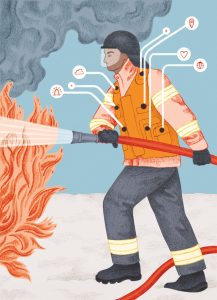
Their work is often life-threatening. A Swiss start-up company based on Lake Geneva, called WEARIN’, has now developed a smart vest to support first responders in their work. It’s kitted out with sensors to record individual body signals such as heart rate, body temperature, heat stress and overall stress levels. It also monitors the location of the wearer. This can save lives in cases where external hazards – such as toxic gases – could result in them losing consciousness. “We’re a kind of guardian angel”, says Chloé Duriez, the boss of WEARIN’. Their expertise lies in linking up different technologies. An intelligent platform can provide real-time insights, collect data and interpret it using AI and thereby be in a position to trigger warnings automatically, depending on the crisis in question. The incident managers can also monitor the situation in real time and coordinate assistance. “Our system enables you to get a better, faster overview of a dangerous situation”, says Duriez. Police forces are now also using these vests. Besides their sensors, WEARIN’ is also integrating laser and LiDaR devices on helmets that provide better visibility in smoke and fog. They also have an SOS button for people to alert help themselves. “We always combine the best devices for a specific mission”, says the project manager Bastian Peter.
When a person becomes a giraffe
Rachele Didero is a designer based in Milan. While at the Politecnico di Milano, she developed ‘Cap_able’, a project that she recently demonstrated at EPFL.
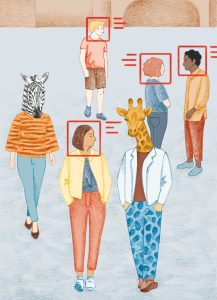
“I was deeply concerned about how AI technologies are affecting our identity, privacy and social rights”, she says. So she came up with the idea of deliberately misleading the common facial recognition algorithms such as Yolo and the neural networks often used today in commercial surveillance. To do this, she integrates so-called ‘adverse patterns’ into Jacquard fabric in order to generate specific forms of optical interference. These patterns confuse AI by interfering with how it recognises human characteristics, rather like the way noise can interfere with an audio signal. Anyone wearing her jumpers, dresses or trousers is interpreted by ‘intelligent’ software as a dog, a zebra or a giraffe, depending on the pattern. It works best with frontal images from surveillance cameras in normal lighting conditions. “These misclassifications occur due to the interference distorting the information received by the neural networks that have been trained to classify images. On the one hand, it helps people to defend themselves against surveillance. But Didero also adds that “this is not just functional by protecting your identity: it’s also conceptual. These garments speak a poetic, almost surreal language that machines can’t read. We think that this illegibility is a powerful metaphor”. Recognition programs are constantly evolving, so her team is also constantly testing its patterns by means of generative algorithms and deep learning. It’s a never-ending game of cat and mouse.
Illustrations: Elisa Debora Hofmann
